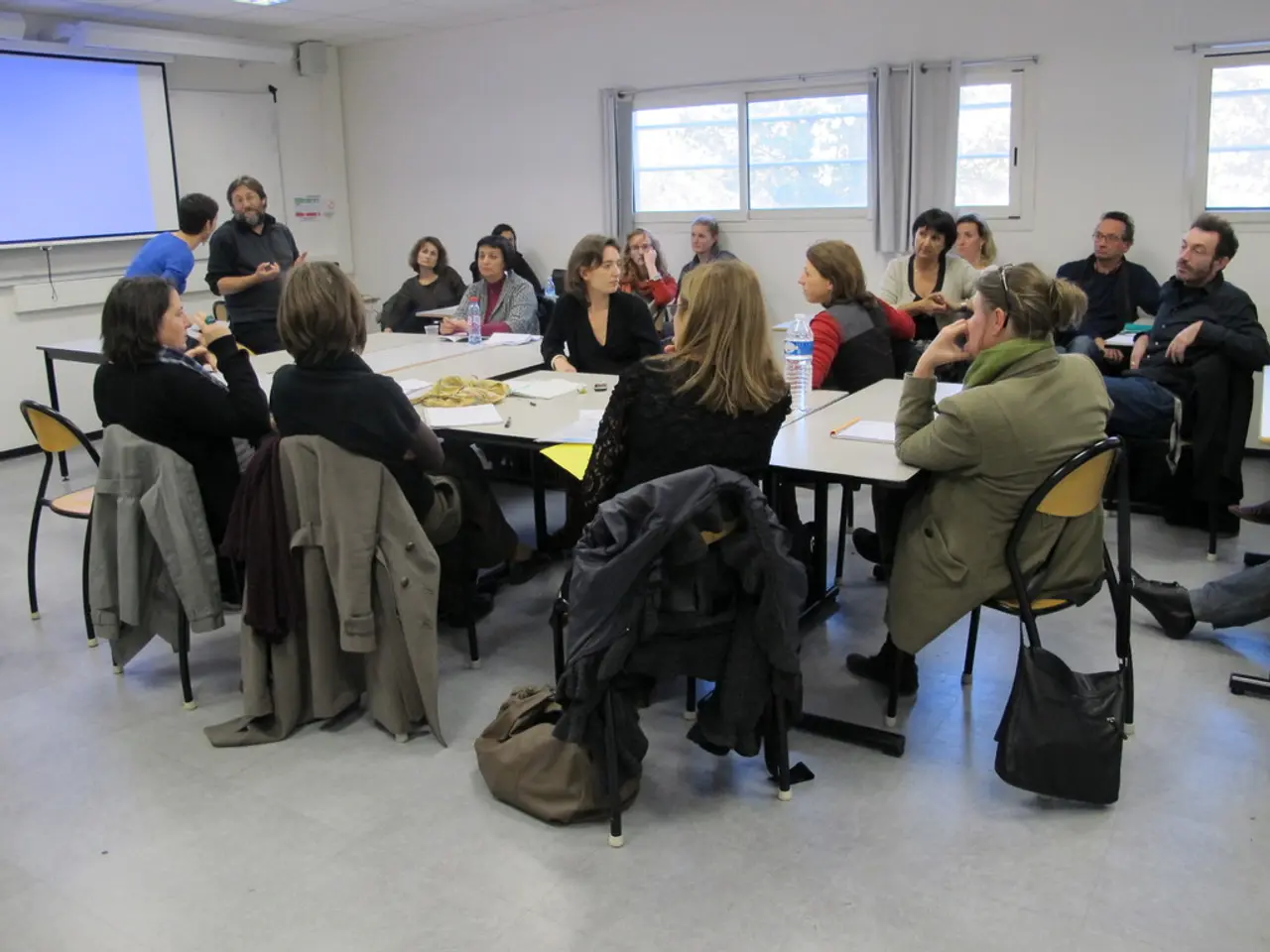Straying from Effective Collaboration: An Analysis of Our Shortcomings
In today's fast-paced work environment, effective collaboration and purposeful work practices are essential for increased productivity, health, and well-being. Here are some strategies that can help you avoid common pitfalls and achieve these goals.
## Strategies for Effective Collaboration
### 1. Build Trust and Psychological Safety
Trust and psychological safety are the foundations of collaboration. Team members should feel secure sharing ideas and perspectives without fear of judgment or retribution. Regular check-ins foster open communication, ensuring everyone is aligned with the project goals.
### 2. Establish Clear Objectives and Leadership
A shared purpose helps align departments and improves prioritization, ensuring everyone works towards the same goals. Effective leadership is crucial for guiding cross-functional teams, delegating tasks, and ensuring accountability.
### 3. Foster a Collaborative Culture
Implement mentorship programs to connect people across roles, promote knowledge sharing, and foster a sense of community. Organize team-building activities to break down silos and enhance workplace connections.
### 4. Utilize Efficient Communication Strategies
Adopt an asynchronous communication approach for non-urgent matters to reduce unnecessary meetings. When meetings are necessary, ensure clear agendas and action items to maintain meeting efficiency.
### 5. Balance Work and Life
Establish clear boundaries between work and personal life to avoid burnout and maintain mental well-being. Maintain a dedicated workspace to boost productivity and support work-life separation.
## Purposeful Work Practices
### 1. Prioritize Tasks
Focus on high-impact tasks that align with your goals and have the greatest impact to ensure you are working on meaningful projects.
### 2. Establish a Routine
Developing a routine helps maintain focus and reduces stress by providing a clear distinction between work and personal time.
### 3. Engage in Continuous Learning
Regularly update your skills and knowledge to stay relevant and engaged in your work.
By implementing these strategies, you can enhance collaboration, increase productivity, and improve overall health and well-being. Admitting limitations and being ready to learn from others is beneficial. Priorities should be clear, and learning to say no is important. Employees can be overwhelmed by excessive tasks given by different stakeholders, leading to lost priorities and goals.
Avoiding common pitfalls in collaboration and becoming more purposeful in work can significantly improve productivity, health, and well-being. Be mindful of inner triggers, fear of missing out, the desire for recognition, and the sheer volume of communication and collaboration tools. Focus on moving in the correct direction and be open to adopting new ideas as new information becomes available.
Developing a routine for work and engaging in continuous learning is crucial for personal growth and career development. By admitting limitations and being open to learning from others, employees can enhance their skills and move towards their professional goals. Effective collaboration not only improves productivity but also fosters self-development, as it provides opportunities to learn from diverse perspectives and build stronger relationships.




